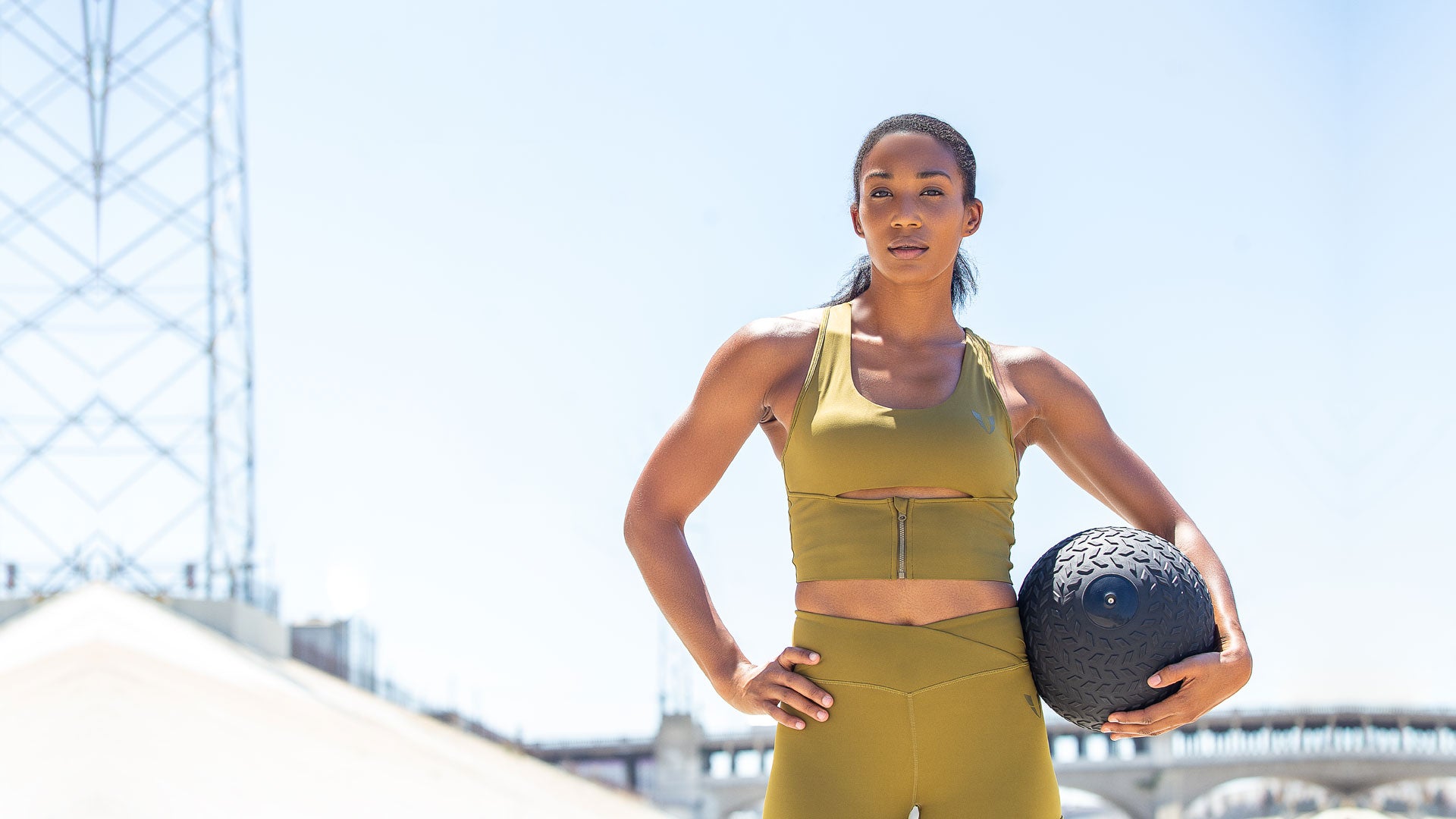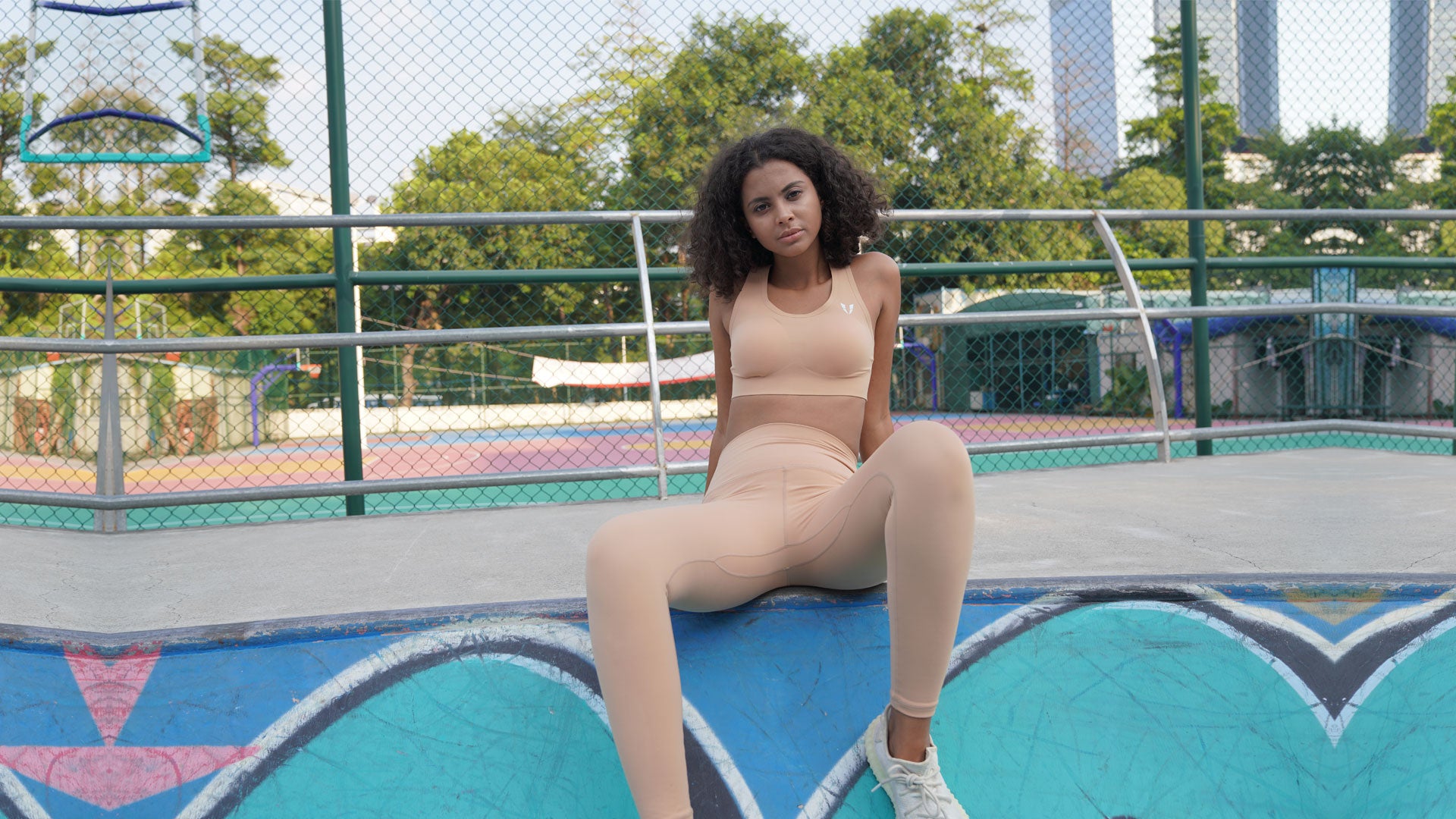
Hoe je je kwijt kunt komen van spierpijn ?
Als je eerder hebt gesport, is het eerste waar je aan denkt als je die kettlebell-les hebt afgerond waarschijnlijk iets in de trant van: "Dit gaat morgen pijn doen". Je hebt je misschien zelfs afgevraagd: hoe kan ik dit in hemelsnaam minder pijn laten doen? Gelukkig zijn er beproefde methoden die je kunnen helpen om pijnlijke spieren te behandelen, en ze zijn allemaal heel eenvoudig uit te voeren. Hieronder leggen we uit waarom spieren in de eerste plaats pijnlijk worden, en daarnaast acht verschillende methoden die je kunt gebruiken om spierpijn te verminderen.
Waarom worden spieren pijnlijk?
Wanneer u traint, krijgen uw spieren microscheurtjes. Dit betekent dat de oefening uw spierweefsel licht beschadigt, maar dat is goed! Uw lichaam weet hoe het deze microscheurtjes in een korte tijdsperiode (meestal uren of dagen) moet repareren. Wanneer uw lichaam spiermicroscheurtjes repareert, worden uw spieren geleidelijk sterker en sterker.
Wanneer u echter de intensiteit van uw trainingen verhoogt, of een vorm van oefening probeert die u nog nooit hebt geprobeerd (of al een tijdje niet hebt gedaan), zult u meer microscheurtjes ervaren dan normaal. Dit is de reden dat u zich stijf voelt na een extra intensieve training. Dit is meestal gezond, zolang de spierpijn niet langer dan een week of zo aanhoudt. Tegelijkertijd vraagt u zich misschien af hoe u spierpijn kunt voorkomen of verminderen, zodat u ga terug naar de sportschoolOntdek hieronder hoe u spierpijn kunt verhelpen.
Hoe verlicht ik spierpijn?
Drink cafeïne voor het sporten
Onderzoeken hebben aangetoond dat het drinken van een kopje of twee koffie voor het sporten spierpijn kan voorkomen of verminderen. Als koffie echter niet goed bevalt, kunt u altijd zwarte of groene thee proberen; deze bevatten echter minder cafeïne dan uw gemiddelde kopje koffie, dus u moet mogelijk meer drinken om hetzelfde effect te krijgen.
Neem direct na het sporten een koude douche of een koud bad
Door je spieren onder te dompelen in koud water kun je zwelling verminderen, wat kan helpen om pijnlijke spieren te verlichten, als je dit direct na je training doet. Dat betekent dat je een koude douche moet nemen in de sportschool of een koud bad of douche moet nemen zodra je thuiskomt - niet later! Het is belangrijk om koudetherapie zo snel mogelijk te gebruiken. Als je te lang wacht, zijn je spieren al begonnen met hun herstelproces, wat betekent dat je waarschijnlijk niet dezelfde pijnverlichtende effecten zult zien.

Behandel pijnlijke spieren met een foamroller
Het masseren van vermoeide spieren op een foamroller na het sporten voelt niet alleen geweldig, maar het helpt ook om spierpijn te verlichten door de bloedsomloop te verbeteren. Dit helpt om microscheurtjes snel te repareren, zodat u sneller herstelt. U kunt een foamroller kopen bij elke sportwinkel. Voor het beste resultaat masseert u uw spieren met uw foamroller na elke training.
Stop met intensieve oefeningen totdat de spierpijn afneemt
Als je jezelf graag uitdaagt, kun je in de verleiding komen om 'door te zetten' met spierpijn en net zo hard te trainen als je normaal zou doen. Doe dit niet! Als je spierpijn hebt, hebben je spieren rust nodig of, in het beste geval, een periode van actief herstel (zie het volgende punt voor een uitleg hiervan). Je spieren moeten genezen als ze pijnlijk zijn. Denk er maar eens zo over: je zou toch geen honkbal spelen als je pols geblesseerd was? Waarschijnlijk niet – je zou het de tijd willen geven om te genezen. Hoewel spierpijn geen volwaardige “blessure” is, is het nog steeds de manier van je lichaam om aan te geven dat het tijd nodig heeft, dus zorg ervoor dat je pijnlijke spiergroepen rust geeft totdat ze volledig hersteld zijn.
Doe echter wel lichte oefeningen, zoals wandelen
Dat je spieren rust nodig hebben, betekent niet dat je de hele dag moet zitten. Actieve rust is juist goed tegen spierpijn."Actieve rust" betekent elke lichte oefening die geen overmatige belasting vormt voor pijnlijke spiergroepen. Lichte oefeningen doen terwijl u pijn hebt, kan de opbouw van melkzuur elimineren, waardoor uw lichaam snel kan herstellen. Dit kan bijvoorbeeld wandelen, rustig fietsen, hatha yoga of licht zwemmen zijn.
Hydrateer voor, tijdens en na je training
Als je regelmatig traint, weet je waarschijnlijk al hoe belangrijk het is om gehydrateerd te blijven. Dit geldt ook voor spierherstel. Onderzoeken hebben aangetoond dat gehydrateerd blijven voor, tijdens en na het sporten spierpijn kan verminderen door sneller spierherstel te bevorderen.
Krijg een massage
Veel massagetherapeuten bieden tegenwoordig een zogenaamde "sportmassage" aan, die zich richt op de specifieke spiergroepen die het meest pijnlijk zijn na het sporten. Laat uw massagetherapeut weten welke oefeningen u doet en welke spiergroepen het meest pijnlijk aanvoelen. Een massage voelt niet alleen geweldig aan, maar verbetert ook de bloedsomloop in pijnlijke gebieden, waardoor die gebieden zich veel sneller beter voelen.
Eet eiwitten na het sporten
Heb je de gewoonte om na elke training eiwitten te consumeren? Dit kan bijvoorbeeld door een eiwitreep te eten, een eiwitshake te drinken of een eiwitrijke snack te eten, zoals pindakaas op toast of gebakken eieren. Je lichaam heeft eiwitten nodig om spierscheuren te herstellen, en het heeft ze snel nodig. Vergeet daarom niet om direct na je training een eiwitrijke snack of maaltijd te eten, voordat je zelfs maar van je jouw actieve kleding!
De volgende keer dat u klaar bent met die zware tilsessie, bedenk dan dat u niet alleen maar hoeft te lijden onder uw ondraaglijke spierpijn! Voer een van de bovenstaande stappen ijverig uit voor en/of na uw training, en u zult de volgende dag blij zijn dat u dat hebt gedaan. Al met al, bedenk dat spierpijn niet slecht is, zolang het niet langer dan een week of zo duurt - het is een teken dat u sterker wordt.




Laat een reactie achter
Deze site wordt beschermd door hCaptcha en het privacybeleid en de servicevoorwaarden van hCaptcha zijn van toepassing.